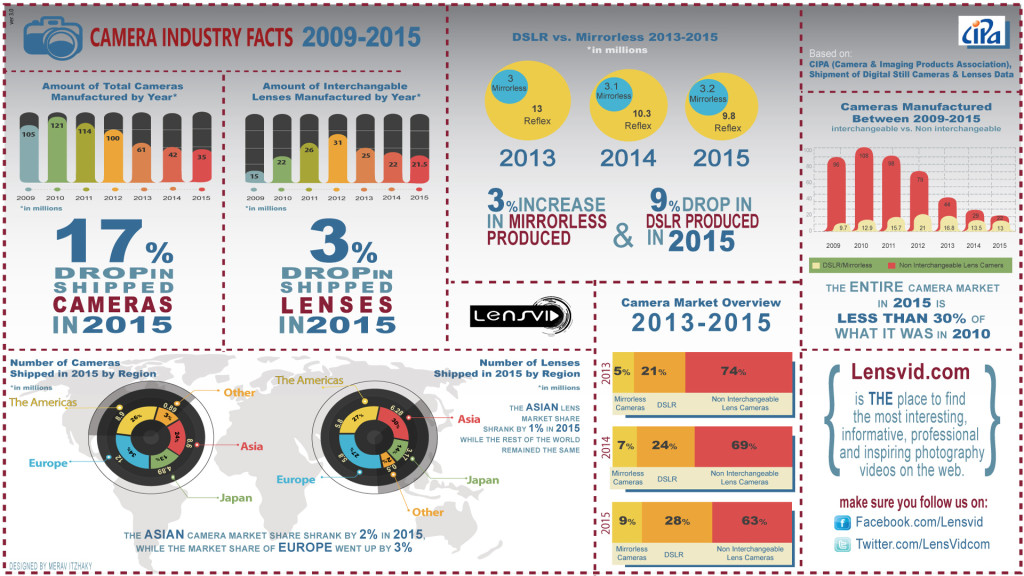I can imagine Charlton Heston as a photographer saying, “I’ll give you my mirrors, when you pry them from my cold, dead hands.” Two stories today indicate as much progress as mirrorless has made, photojournalist are still shooting with their Nikons and Canons.
First…World Press Photo announced the winners of their 59th press photos contents. They were selected from 82,951 photos made by 5,775 photographers from 128 different countries and the winner is Warren Richardson for his Hope for a New Life. The image of a man passing a baby through the fence at the Hungarian-Serbian border in Röszke, Hungary, 28 August 2015, was shoot with a Canon EOS 5D Mark II. The Spanish site, Quesabesde, analyzed the exif from the photos and shared that of the 45 photos, 15 were take with a Canon. Mirrorless systems had one photo each.

So why is that? Fear of making the wrong choice…a camera system and lens is a considerable investment and they’re durable, they’re weatherproof for the field and occasionally they’re literally bullet-proof. But for the rest of us, as I’ve been writing about since the Alpha Series launched, I’ll take the weight loss for the durability penalty — if being dropped into a war zone, I’d pick a Nikon or Canon too.
Second…take a look at the infographic from Lensvid who analyzed CIPA data and found a shrinking overall camera market with growth in mirrorless and a drop in DSLRs. So why is that? Phones that produce quality images have taken a 11% out of the point-and-shoot market in the past 3 years and since 2010, a 30% drop. That’s why Sony invested a billion US in their sensors, anticipating that desire for a compact camera with even better images than an iPhone. What Lensvid didn’t consider in their analysis was the eventual merger of still and video cameras, like the a6300, which is what phones offer as well, but without changeable lenses and incredibly fast autofocus. In writing about my daily shooter, last week, I shared that I’m mostly shooting with an RX1R II and not my phone—I’m doing that for the image quality, and sharing those either for personal or business use.

LensVid Summary
- 2015 was the third year of double digit drops in the number of cameras manufactured globally – this is surely not sustainable for any industry.
- Reflex cameras have more or less settled at around 10 million units a year while mirrorless cameras gained a slight momentum – it is still far below some of the earlier predictions.
- Compact cameras are becoming an extinct “species” with 2015 having only 1/6’th or so the number of compacts sold in 2010.
- The European market is still the largest one with over a third of the total global market, however the Asian market continues to be the largest for lenses with 30% (and almost 45% with Japan).
LensVid Predictions
- 2016 will be a better year for the photography market. With that said, we still expect the total number of cameras sold in 2016 to be below 30 million – or around 15% decrease compared to 2015.
- On the other hand, we expect more DSLR sales in 2016 – with a one digit increase, and more or less the same increase in mirrorless cameras.
- We are predicting that compact cameras will drop below 20 million and may even get close to 15 million (compared to 22 million in 2015).
- Finally, Looking a bit ahead in the next 2 years DSLRs and mirrorless cameras will have a bigger market share than compact cameras, which we are predicting – will become a niche market before the end of this decade.
Considering that the Sony a6000 is the best-selling digital camera in history, I don’t know how that equates with Lensvid’s finding that compact cameras are nearly extinct with about 15 million sold. It’s more of a market adjustment when a consumer wants more flexibility in their photos than the camera in their phone. However, do agree that it’s surprising mirrorless hasn’t made bigger gains, when considering the image quality. Probably because of the reasons I shared above and why people hold onto their DSLRs with a death grip.
What’s not surprising is that Samsung has practically disappeared from the market and why Sony is focused on premium cameras, where the margins are. Finally, that’s a lot of numbers to parse from LensVid, and if you read CIPA’s take, it’s not as gloomy as theirs
Digital cameras with a built-in lens have faced fierce competition with the advent of the smartphone. Digital cameras with an interchangeable lens, however, provide picture quality that is completely different from that of smartphones and demonstrate an unrestricted expressiveness when combined with highly individualistic exchangeable lenses, which continue to excite camera fans, and demand for these cameras remains firm.
and
It is expected that not only will there be strong demand from users who have come to enjoy taking photos because of low-end digital cameras and smartphones and want better digital cameras—so-called step-up demand—but also that demand for digital cameras with an exchangeable lens will remain firm compared to that for digital cameras with a built-in lens.
The takeaway on those charts and market analysis is that the hemorrhaging is in the point/shoot market, which is being cannibalized by phones, but people really want to shoot with a better camera and with a selections of quality lenses. So the market contracted because of phones, but the bleeding has stopped, and demand is high for digital cameras interchangeable lenses, like the a6300.
…
My daily shooter is Sony A1 with a vertical grip and various Sony lenses attached like the FE 20mm F1.8. Find more gear recommendations in our shop. As an Amazon Associate I earn from qualifying purchases.
